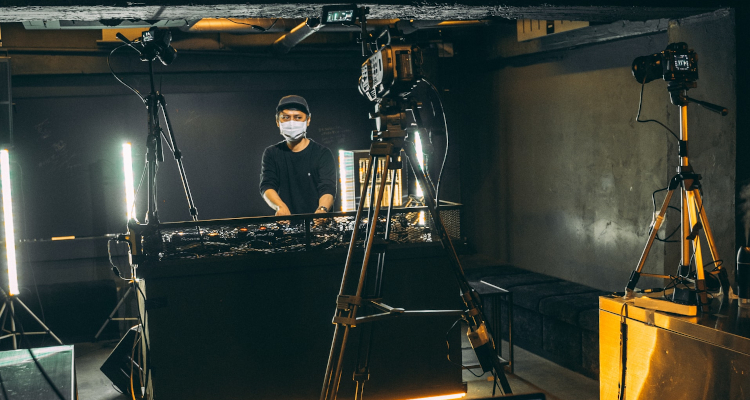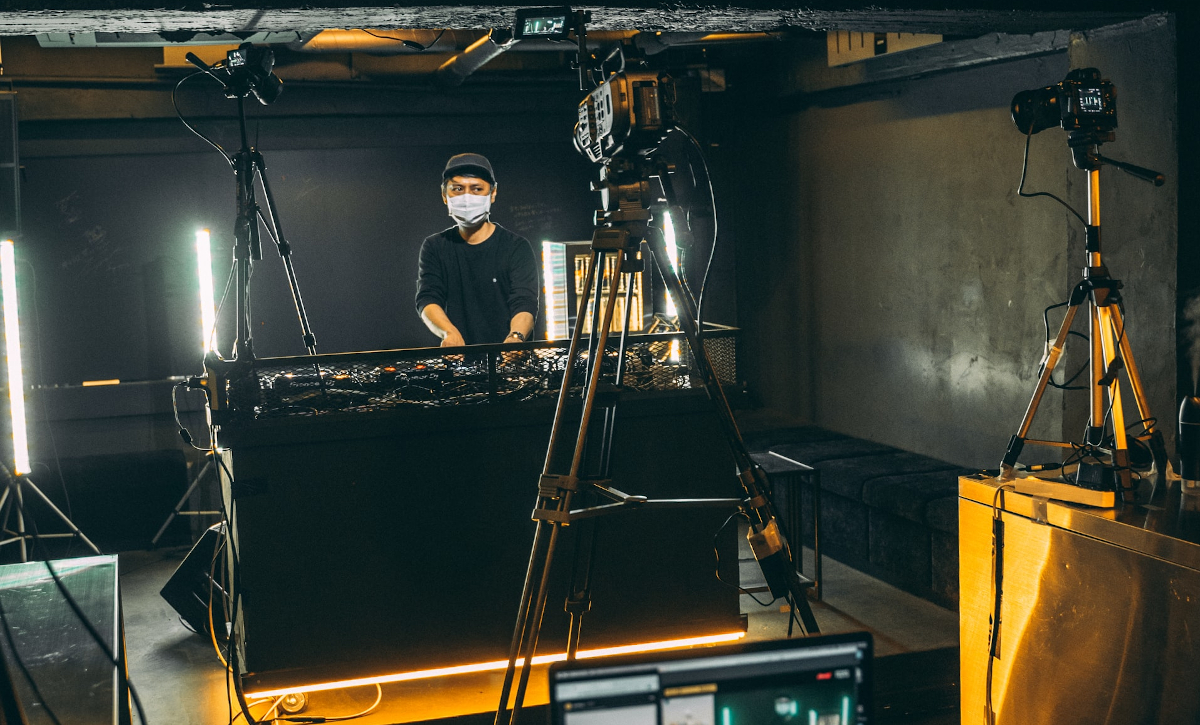
Photo Credit: Heshan Perera
So what’s the best way to win at live streaming? During a recent Zoom event, three talented musicians shared useful tips on how you can connect with virtual audiences amid the COVID-19 pandemic.
The following was created with the support of Songtradr, part of a broader partnership focused on the sync licensing space. Be sure to check our ongoing coverage of this fast-growing sector here.
Artist and label owner José James, Brooklyn-based musician Miette Hope, and veteran singer-songwriter Craig Cardiff offered invaluable advice on live streaming throughout a recent Songtradr-hosted panel, “Finding Your Virtual Audience.”
1. Avoid Overbooking Live Streaming Concerts
Early in the discussion, Juno Award nominee Craig Cardiff indicated that while entertaining fans with remote shows is a great way to stay active and foster stronger connections, it’s entirely possible to provide too much free content. In effect, the market oversaturation brought on by an influx of live stream gigs – for there are only so many hours in the day – serves to reduce sets’ reach and appeal to virtual audiences.
“I think too many of us have given too much away for free during this. Like with, you know, the amount of live performances. And I’m guilty of it,” said Cardiff, who signed with Canada’s True North Records this year and is preparing to release an album entitled All This Time Running.
“At the beginning [of the pandemic] I started a ‘live from everywhere’ that I did every night for an hour, a half an hour to an hour,” continued the Waterloo-born creator. “And I loved doing it because it gave me a focus and I missed touring so much. But eventually I kind of burnt out on it. I don’t know if it was expanding anything – I think it was too much. Too much too often.
“I would have been better off to like give a more focused, spread-out experience. A more curated experience, with like interviews or whatever.”
A smaller number of (possibly longer) remote concerts could also amplify results while preventing both musicians and virtual audiences from experiencing burnout.
2. Take Advantage of the Pause to Craft New Material
José James, for his part, relayed that he’s capitalizing upon the traditional-concert pause to create new music as well as new media, which are likely to attract and engage fans in both the short and long terms.
Fresh songs and material will draw viewers to live streams – and, once the pandemic is in the rearview, to in-person shows. Moreover, the chance to affordably capture gigs at venues (and unique settings that’re well-suited for filming) won’t last forever.
“Now that I have the ability to release music — whatever I want whenever I want, at a high level,” said the former major-label artist and current Rainbow Blonde owner James, “I’m taking advantage of that.
“When we did our live shows, we rented [Woodstock, New York venue] Levon Helm and we produced a live stream concert there for myself and my label partner and co-artist on the label Taali. So we had seven cameras film and chopped it all up. We just literally got the masters two days ago from the mastering engineer, and we’re feeling really good about it.
“We have now like a full double album with a music video, basically live from Levon Helm, for every track,” finished James.
3. Target Different Virtual Audiences With Different Types of Performances
Expanding on the latter point, James noted that he doesn’t solely capture live sets from high-profile venues. Instead, “The Greater Good” artist entertains his existing fans – and specifically those who’ve subscribed to his Patreon account – with more intimate and spontaneous performances from home, while also appealing to new virtual audiences yet with sets like that from Levon Helm.
“The main difference if I’m being honest is the venue,” said James, speaking of what most affects energy when playing. “I do shows, solo shows, for my Patreon. At home. And that’s cool because I know everybody who’s in the community. And that makes me feel like warm and friendly because it’s not strangers.
“But when we went to Levon Helm and later to [New York City venue] (Le) Poisson Rouge, it’s in a club. It’s in a place that you know, the sound is great. And we just played off of each other.
“And I guess it’s just like a mindset of getting into. Like, you know what, I have this platform right now. I can deliver the best of my artistry with this community, and I’m gonna do it to the – I mean, it’s different. I’m not gonna lie, it’s different. But we still found a way to really push,” James stated.
4. Make the Most of Live Streaming – Even Though It’s a Less-Than-Ideal Substitute for In-Person Shows
Towards the discussion’s conclusion, Miette Hope recognized that it can be difficult to connect with virtual audiences – or, more precisely, to establish the same connection as you would during in-person shows.
“Performing to a screen is really challenging,” said Hope, who also releases music as The Natural Synthetic with her frequent collaborator Ariza. “It’s hard to just banter the same way and just kind of – without the interaction and the faces in front of you, it’s definitely challenging.”
Nevertheless, the 24-year-old “Oxygen” singer acknowledged that despite their faults and limitations, today’s digital tools have – and are – enabling her to remotely reach fans, from all across the country and the world, during a trying period.
“At the same time, I always have to go back to the gratitude for all of our abilities to access these tools,” said Hope. “If I didn’t have any way of connecting with my fans, I wouldn’t even have the chance to complain about live streams not being gratifying or validating enough for me as an artist.
“Any opportunity to connect with the listeners is valuable, for sure,” said Hope.
And in addition to proving immediately beneficial for both musicians and viewers, live stream performances appear poised to bolster interest in traditional gigs once they resume.

